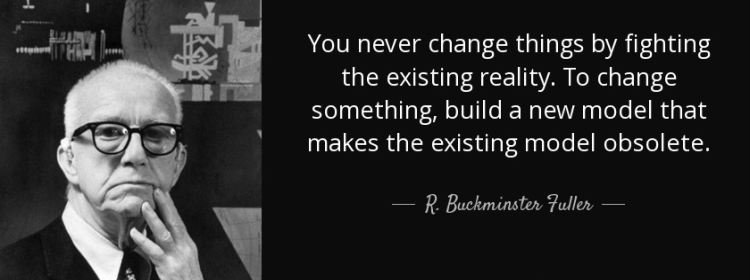
In today’s cluttered business landscape and global marketplace, finding uncontested markets to sell into and own, free of competition, at least for the foreseeable future, is getting harder, and harder and harder.
Developing innovative ideas that turn into something new, unique and viable, are not easy to copy, and deliver revenue and healthy margins is equally tough.
Rethinking our marketplaces, our traditional customers and non-customers, and how we sell and deliver real value to them, that they are prepared to pay for, well that’s another difficult challenge too.
Most businesses these days find that they are increasingly competing head to head with direct and indirect competition, often struggling to find points of differentiation, which often lead to price wars, and at worst, a race to the bottom death spiral. This is often referred to as the Red Ocean where rivals are fighting over a shrinking profit pool.
And then comes along the disputers or alternatives to what is traditionally offered, and everything is turned on its head. Think Uber and the taxi industry, AirBnB and the hotel industry and Amazon and the retail sector. These businesses have created major disruptions and new markets. However, this isn’t a new problem.
What we do know is that standing still, expecting everything to stay the same, in today’s world is the equivalent of going backwards and out of business, fast.
If you are asking where the profit margins are, where the uncontested ground is, where the next big idea we can capitalise on is, where the profitable sales opportunities that deliver sustainable business results are; you may want to take a look at Blue Ocean Strategy as an alternative strategy to business growth.
Blue Ocean Strategy
Blue Ocean Strategy (BOS) is an exciting and highly practical concept, system and business discipline that emerged around 2005 from the work of W. Chan Kim and Renee Mauborgne, two professors of strategy and management at INSEAD and co-directors of the INSEAD Blue Ocean Strategy Institute in Fontainebleau, France. The BOS system emerged from studying over 150 powerful strategic moves over 100 years and thirty industries.
Some Blue Ocean Strategy innovation examples:
Automotive: 1908 Model T Ford – one colour one model; 1924 General Motors – ‘a car for every purse and purpose’; 1970s Small, fuel-efficient Japanese Cars; 1984 the Chrysler Mini Van.
Computers: 1890 The Punch Card Tabulating Machine; 1914 National Cash Register Company; 1952 Remington Rand delivered UNIVAC the world’s first commercial electronic computer; however IBM introduced the IBM 650 and intermediate sized computer for business use at a fifth of the price ($200,000 versus $1M), was easier to use, and within 7 years had 85% market share with $1.16B turnover in 1959. IBM further extended their lead by introducing the System/360 with interchangeable software, peripheral equipment and service packages; 1978 Apple Computers created an entirely new market with the personal computers; 1992 Compaq created the PC server industry; 1990’s Dell Computers disrupted computer manufacturing, purchasing and delivery with direct sales to customers.
Blue Ocean Strategy work is focused on finding and executing strategic moves called ‘value innovation’ that deliver powerful leaps in value for both the organisation and buyer, and render rivals obsolete.
Blue Ocean Strategy is about making the competition irrelevant.
To put Blue Ocean Strategy in context of Business, Marketing and Sales Strategies, Blue Ocean Strategy is about an attitude of purposeful innovation and continued business viability and sustainability.
Blue Ocean Strategists have a different strategic logic
- “We challenge industry conditions & paradigms”
- “We focus on customers, not competitors”
- “We don’t segment customers, we aggregate them”
- “Our assets capabilities are not fixed, they are fluid”
- “We solve problems across the entire supply chain”
The Blue Ocean Strategy system and process is all about:
- De-risking strategy development and implementation
- Building execution into strategy
- Engaging the business in innovation
- Making it fair for all team members
- Reconstructing market boundaries
- Reaching beyond existing demand
- Exploring the buyer experience
- Uncovering any blockages across 6 utility areas
- Testing good ideas and their viability
- Identifying red ocean traps
- Successfully executing Blue Ocean Strategies
Three ways of pursuing Market Creating Strategy
What Professors Kim and Mauborgne identified is that are 3 ways of pursuing Market Creating Strategy:
- Offering a breakthrough solution for an existing industry problem
- Redefining and solving an existing industry problem
- Identifying and solving a brand new problem or seizing a brand new opportunity
Blue Ocean Strategy is the logical extension to Sales Strategy to develop new markets and find uncontested grounds in which to sell.
Is a Red Ocean business bad?
Not necessarily. It’s how well you compete in that market place to ensure your continued existence, it’s just likely yield to very low margins.
Innovative businesses tend to be Blue Ocean Strategists, who create new uncontested markets, solve old problems with new approaches and generate higher profit margins because they have strategic pricing advantages.
Why not explore Blue Ocean Strategies for your business? It might make all the difference.
Barrett is an accredited Blue Ocean Strategy business. Talk to us about finding uncontested markets.
Remember everybody lives by selling something.
Related topics
The differences between business, sales and marketing strategies
What are the biggest sales issues & opportunities for CEOs & Sales Leaders today?
Sales Strategy: Ditch short-termism for robust sales strategies that drive more & better sales now & over the long-term


New Article Email Notification